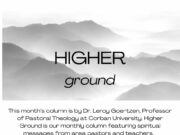Upcoming events:
April 29: Rescheduled: Ag Banquet, 5:30 p.m. Social, 6:30 p.m. Prime Rib Dinner, Ag Pavilion Seward Co. Fairgrounds
April 29-30:Water for Food Conference, Nebraska Innovation Campus
May 8: Field Scout Training, Reg. 8 a.m., ENREC (former ARDC) near Mead, https://enre.unl.edu/crop.
May 20: CSI for Youth: Beginning season scouting, 5 p.m., RSVP jrees2@unl.edu
May 20: Ag Land Management Webinar, 6 p.m., Register: https://agecon.unl.edu/landmanagement
May 20-21: Tractor Safety Training, Fairgrounds, Geneva, (402) 759-3712, https://go.unl.edu/mcyy
May 22-23: Tractor Safety Training, Fairgrounds, Nelson, (402) 225-2092, https://go.unl.edu/mcyy
May 28-29: Tractor Safety Training, Extension Office, Grand Island, (308) 385-5088, https://go.unl.edu/mcyy
May 30-31: Tractor Safety Training, Extension Office, Kearney, (308) 236-1235, https://go.unl.edu/mcyy

Perhaps it was the hard winter, but I’m finding the flowering trees to be exceptionally pretty this year! Corn and even some soybean went into the ground this past week too. In last week’s column, I shared regarding planting considerations yet would still encourage growers to keep considering your local field conditions before planting. You’re hearing some of these same things from both Extension and Industry partners and we realize field situations differ. We keep repeating these things to provide reassurance when you’re questioning decisions. We’ve already seen problems with anhydrous application in too wet of conditions in some fields. We’ve already seen some situations that were too wet when corn was planted leading to problems with compaction, depth issues, and not closing seed vee’s. With the cold snap, it’s important to consider soil temperatures (preferably around 50F or warmer for next 48 hours), soil moisture conditions, air temperatures for the next 48 hours, potential for cold rain, and cold tolerance of seed. Soil temperatures are listed at http://go.unl.edu/soiltemp and I would also encourage you to check your own particular field conditions. Last week, I was finding soil temperatures in local field conditions to be cooler than what was being reported from high plains regional climate center. If you don’t have a soil temperature thermometer, you can do this with a meat thermometer (and just dedicate it for field use).
I can appreciate the added concern and stress with this week’s forecast. There’s several planting-related articles in this week’s CropWatch at http://cropwatch.unl.edu. Two really helpful articles from Roger Elmore share on corn planting windows where he used USDA NASS data to show Nebraska data and also shared how other states throughout the Corn Belt have found similar results regarding planting windows. The key point is there’s a planting window between mid-April to mid-May within which optimum yields are usually obtained. After this period, yields decrease rapidly. So there’s still time and the planting conditions play a role in determining final yield by getting that seed off to a good start. You also keep hearing me talk about planting soybean early. Even as early as you can in May is better than mid to late May for higher yields if that works for your situation.
Browning Evergreen Trees and Shrubs: This past winter was hard on many things. When it comes to evergreen trees, the deep frost line and extreme cold led to the inability for transpiring trees to uptake moisture. This resulted in needles appearing brown and looking dead, particularly on the north and sometimes west sides of trees. I’m seeing this particularly on junipers, cedars, arborvitae, white pines, and some spruce. We’d recommend waiting till June before pruning any dead portions out or removing any trees/shrubs to see what happens with new growth.
Rhizosphaera Needle Cast in Spruce has been really bad the past few years. If you’re seeing spruce needles on lower parts of the tree turning yellow/reddish-purple/brown, then this disease may be the problem. The fungus continues moving upward on the tree. Affected needles are prematurely cast from the tree. Above average moisture during the growing season in parts of the State led to an increasing number of spruces affected by the Rhizosphaera fungus. What’s interesting is that the fungus infects the needles in spring but the symptoms often don’t appear till the following spring. One way to double check is to look for tiny black specks on the needles and on the twigs. The good news is that fungicide applications of chlorothalonil (Fungonil, Daconil, Bravo) or Bordeaux mixture in May can help when shoots are ½ to 2” in length! If we get frequent rains this growing season, applications can be repeated every 3-4 weeks.
Vegetable Planting Guide: Gary Zoubek had put together an excellent vegetable planting guide for the area which can be obtained at the Extension Office or at: https://go.unl.edu/d7qk.
Spring Lawn Seedings: With the difficulty of this past year, many didn’t get dormant seedings on because of all the snow and typically lawn renovation in the spring is difficult because of the inability for applying crabgrass preventer to newly seeded areas. However, a new product has changed this! Scott’s Turf Builder Starter Food for New Grass contains mesotrione which provides PRE and POST control of weeds without affecting the new bluegrass or fescue seeding. We’d still recommending seeding as soon as possible or else wait till August. Tenacity is also a product containing mesotrione that works as a POST for emerged crabgrass, foxtail, and for those dealing with nimblewill (best to apply on troublesome grassy weeds up to 1” tall).
Rhubarb and Frost: For those impacted by frost/freeze this past weekend, if rhubarb leaves are not damaged too much and the stalks remain firm, it is still safe to eat. If the leaves are severely damaged or the stalks become soft or mushy, do not eat these stalks. Remove and discard them. New stalks can be harvested and eaten. Rhubarb often develops seedheads following cold temperatures, but this also does not affect eating quality of the stalks. Remove rhubarb seedheads and discard.


































